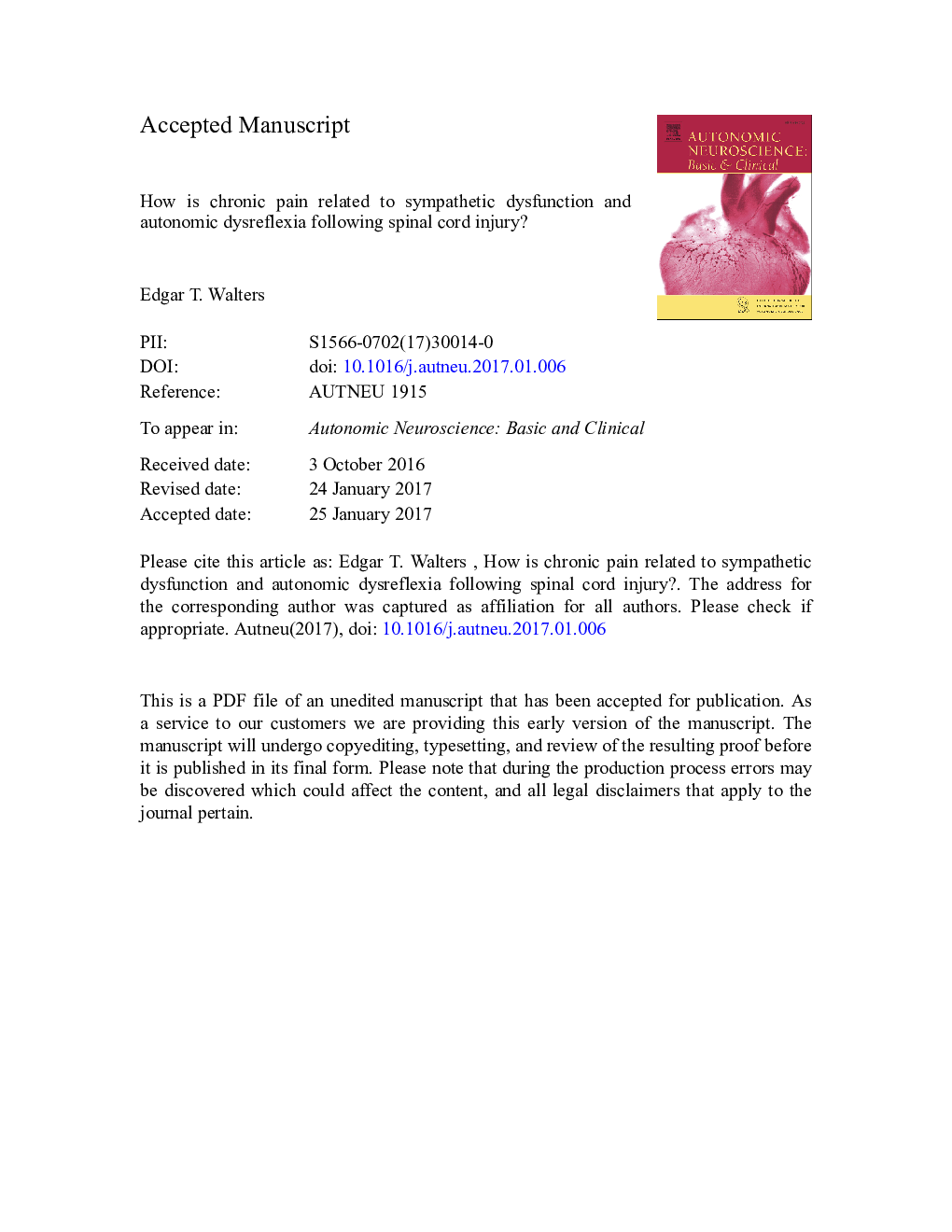| کد مقاله | کد نشریه | سال انتشار | مقاله انگلیسی | نسخه تمام متن |
|---|---|---|---|---|
| 8681066 | 1579506 | 2018 | 46 صفحه PDF | دانلود رایگان |
عنوان انگلیسی مقاله ISI
How is chronic pain related to sympathetic dysfunction and autonomic dysreflexia following spinal cord injury?
ترجمه فارسی عنوان
درد مزمن ناشی از اختلال سمپاتیک و اختلال تنفسی در ناحیه آسیب نخاعی چیست؟
دانلود مقاله + سفارش ترجمه
دانلود مقاله ISI انگلیسی
رایگان برای ایرانیان
کلمات کلیدی
سیستم عصبی سمپاتیک، درد عصبی، عصب خونی عفونی گانگلیون ریشه پشتی، حساسیت مرکزی،
موضوعات مرتبط
علوم زیستی و بیوفناوری
علم عصب شناسی
علوم اعصاب سلولی و مولکولی
چکیده انگلیسی
Autonomic dysreflexia (AD) and neuropathic pain occur after severe injury to higher levels of the spinal cord. Mechanisms underlying these problems have rarely been integrated in proposed models of spinal cord injury (SCI). Several parallels suggest significant overlap of these mechanisms, although the relationships between sympathetic function (dysregulated in AD) and nociceptive function (dysregulated in neuropathic pain) are complex. One general mechanism likely to be shared is central sensitization - enhanced responsiveness and synaptic reorganization of spinal circuits that mediate sympathetic reflexes or that process and relay pain-related information to the brain. Another is enhanced sensory input to spinal circuits caused by extensive alterations in primary sensory neurons. Both AD and SCI-induced neuropathic pain are associated with spinal sprouting of peptidergic nociceptors that might increase synaptic input to the circuits involved in AD and SCI pain. In addition, numerous nociceptors become hyperexcitable, hypersensitive to chemicals associated with injury and inflammation, and spontaneously active, greatly amplifying sensory input to sensitized spinal circuits. As discussed with the aid of a preliminary functional model, these effects are likely to have mutually reinforcing relationships with each other, and with consequences of SCI-induced interruption of descending excitatory and inhibitory influences on spinal circuits, with SCI-induced inflammation in the spinal cord and in DRGs, and with activity in sympathetic fibers within DRGs that promotes local inflammation and spontaneous activity in sensory neurons. This model suggests that interventions selectively targeting hyperactivity in C-nociceptors might be useful for treating chronic pain and AD after high SCI.
ناشر
Database: Elsevier - ScienceDirect (ساینس دایرکت)
Journal: Autonomic Neuroscience - Volume 209, January 2018, Pages 79-89
Journal: Autonomic Neuroscience - Volume 209, January 2018, Pages 79-89
نویسندگان
Edgar T. Walters,
